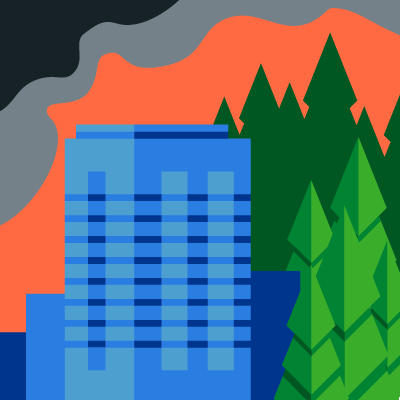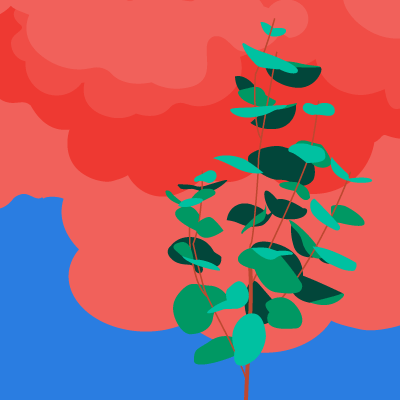The peak of the wildfire season across the U.S. Southwest occurs in June and early July. The National Interagency Fire Center (NFIC)’s National Significant Wildland Fire Potential Outlook for June, July, August, and September issued on June 1, 2020, warned to expect “normal fire activity across the region to increase through the period with some areas experiencing Above Normal significant large fire potential, especially across Arizona.”
At about 2 p.m. on Saturday, June 13, vegetation northeast of Mesa, Arizona, began to burn. Driven by hot and dry conditions combined with gusty winds, the flames quickly spread to become the largest wildfire active in the country and one of the largest recorded in the state. As of June 21 the fire, dubbed the Bush Fire, had consumed almost 185,000 acres of tall grass, chaparral, and brush. Emergency Management Services in Gila and Maricopa counties issued evacuation notices for thousands of residents in Brownsville, Jake's Corner, Slate Creek, Pioneer Pass, Apache Lake, Sunflower, Punkin Center, and Tonto Basin.
On June 21 fire officials permitted people living in some areas to return to their homes, but Sunflower and Apache Lake are still facing imminent and life-threatening danger and BT Ranch, 76 Ranch, Deer Creek, Gisela, and Rye residents remain in "Set" evacuation mode, which recommends voluntary relocation. No injuries or property damage have been noted as a result of the fire, and the blaze is now reportedly 42% contained. Fire restrictions and road closures continue, and the additional heat and lack of rain forecast for the coming week won’t help the firefighters.
There are five other large wildfires currently burning in Arizona—Bighorn, Blue River, Bringham, Dry Lake, and Mangum. The Mangum Fire in the Kaibab National Forest north of the Grand Canyon is the largest of these, having burned just over 66,000 acres as of June 21; northern portions of the fire remain active. Five miles north of Tucson the Bighorn Fire, which started on June 5, has expanded to 51,000 acres and evacuation orders remain in effect for the communities of Mount Lemmon, Mount Bigelow and Summerhaven.
Not including individual fires within complexes, the NFIC reported 34 large fires were active on June 18 across the U.S., 12 of which were burning in Alaska and 6 in Arizona. The agency has recorded 22,070 wildfires during the year to date, which have consumed a total of 945,827 acres. These figures sound alarming, but they are both lower than the 10-year averages reported.
Hot + Dry + Fuel = Risk
Wildfires commonly occur in areas where the climate provides sufficient precipitation for trees or other vegetation to grow, yet also produces extended periods of relatively low humidity and high temperatures. These hot and dry periods allow fallen branches, leaves, scrub vegetation, and grasses to dry out and become extremely flammable.
The western United States possesses several characteristics that make it particularly prone to wildfires. The climate, weather, vegetative density, and large distances between populated areas all contribute to the region's propensity for wildfires. In general, the western U.S. receives sufficient precipitation to support vegetation growth, but also experiences extended warm, dry seasons.
This pattern provides an ample growing season to accumulate fuels, which then dry out. In addition, the various mountain ranges produce strong wind patterns; these sustained winds help wildfires develop and spread. Populated areas in this part of the country are commonly separated by vast wildlands comprising forest and grasslands that serve as fuel supplies. Where human development meets wildlands is called the wildland-urban interface (WUI), areas at high risk for wildfire. The distances between developed areas allow wildfires to become quite large before they are reported or suppressed.
Growing Exposure
According to the NIFC, about 70,000 wildfires occur in the U.S. each year. Fortunately, many of them are small or—like the wildfires currently raging—occur on uninhabited land; only a small number of wildfires cause significant property loss. The data, however, suggest an upward trend in wildfire losses over the last two decades despite the fact that the frequency of wildfires in the U.S. has been relatively steady. This is a clear indication that the increase in insured losses from wildfires is driven primarily by an increase in the number and value of exposed properties in high-risk areas.
As urban expansion increasingly penetrates undeveloped land the WUI is growing. In the continental U.S., according to the U.S. Forest Service (USFS), about 30% of all housing units are located in the WUI. In recent years, the United States has experienced rapid WUI growth—particularly in the western states, according to USFS data. Wildfires usually begin and end in the wildland, but if they expand toward and into developed areas, they can cause damage to exposures in the WUI—anything that can burn becomes potential fuel, including homes and other structures.
The causes of wildfire include not only natural phenomena but also human activity, as a result of downed power lines, for example, or issues such as ruptured gas mains, campfires, discarded cigarettes, or arson. The Big Horn Fire was started by a lightning strike, but the Mesa Fire began when flames from a burning car near the intersection of Bush Highway and Highway 87 ignited vegetation. The USFS’ popular character Smokey Bear has been exhorting Americans to prevent forest fires since 1944—and his message is more important in the wildlands today than it has ever been.
The expansion of the WUI not only increases the number of structures in danger, but also the number of possible human-caused ignitions, which makes the understanding of fire behavior in the WUI a critical piece of evaluating risk.
Read the blog “How Modeled and Industry U.S. Wildfire Losses Differ”




